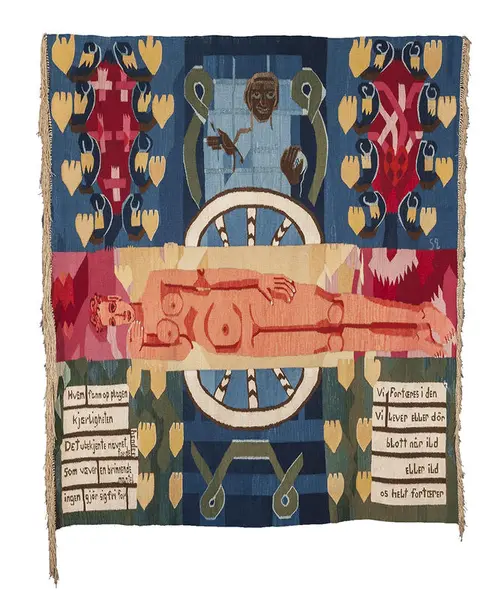Hannah Ryggen (1894–1970) is widely known for her use of an ancient natural dyeing method to create a colour which in Norwegian is called potteblå (pot blue). She achieved the colour nuances by immersing wool yarn into a vat containing indigo and urine, attending to it over time to ensure the right temperature for fermentation. Inspiration and recipes for pot blue were current in Ryggen’s own lifetime and in the generation preceding her, since knowledge of dying textile fibre with plants had been revived during what has been called the Norwegian Weaving Renaissance around 1900. Works that were considered exemplary at the time were tapestries from the 1600s, woven by women from valleys such as Gudbrandsdalen. Although the method of dyeing yarn blue with urine as a mordant is widespread and has been used throughout the world for millennia, pot blue is one of the colours that was considered to be traditionally Norwegian, being rooted in both national textile history and nature itself.
Although using the natural environment and weaving it into her art were obvious choices for Hannah Ryggen, since her time, few Norwegian artists have worked with the time-consuming process required for dyeing pot blue. However, the artist Veslemøy Lilleengen (b. 1975), who hails from Ørland in Trøndelag where Ryggen also lived and worked, has specialised in the method and maintained the tradition. At the same time, Lilleengen debunks some of the myths surrounding pot blue. How many nuances of blue do you see in the nine textiles in this small exhibition? How many ‘DNA portraits’ do you think they can contain?
- 1/1
Hannah Ryggen, "Dikt av T. S. Eliot" (1952). Foto: Anders S. Solberg
